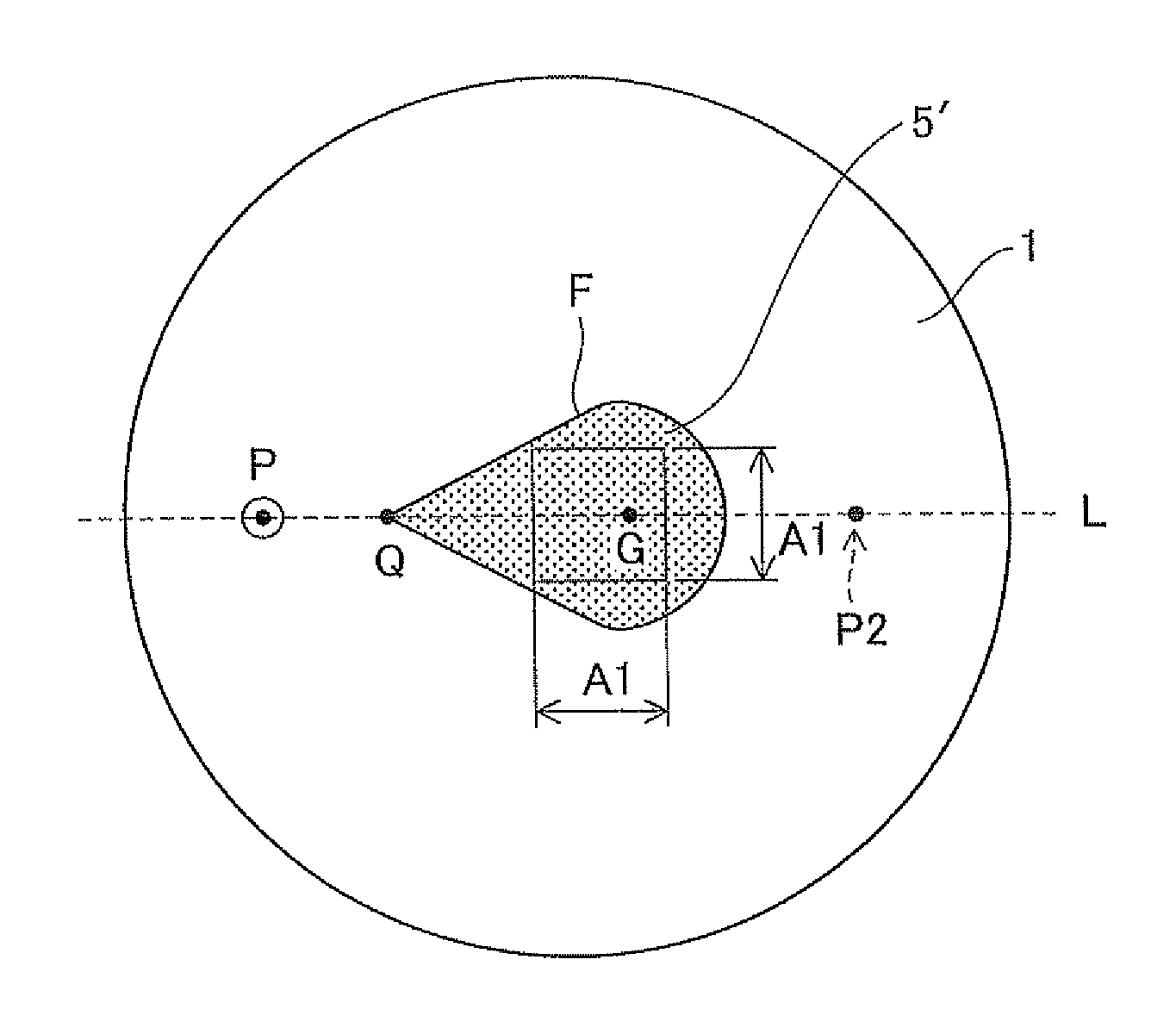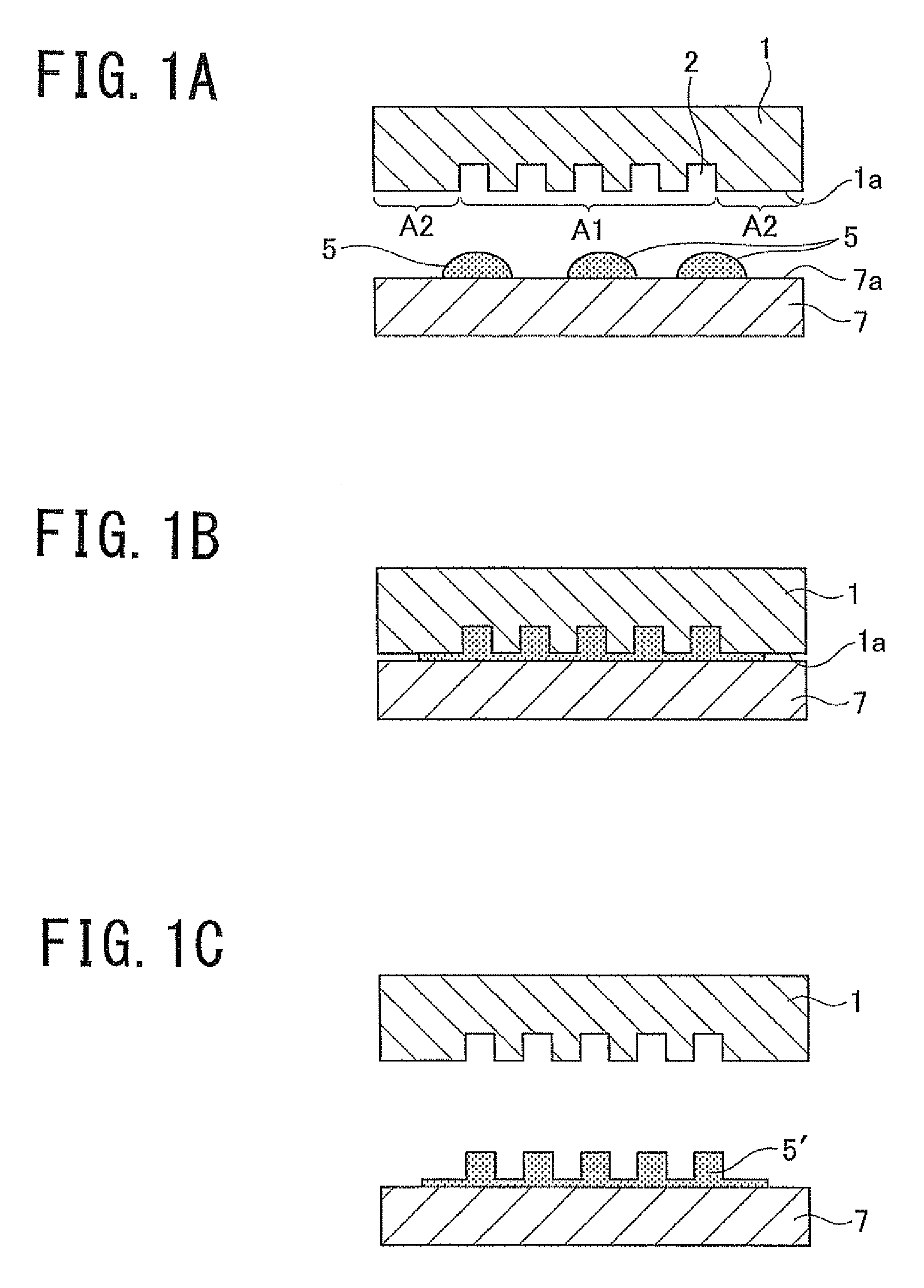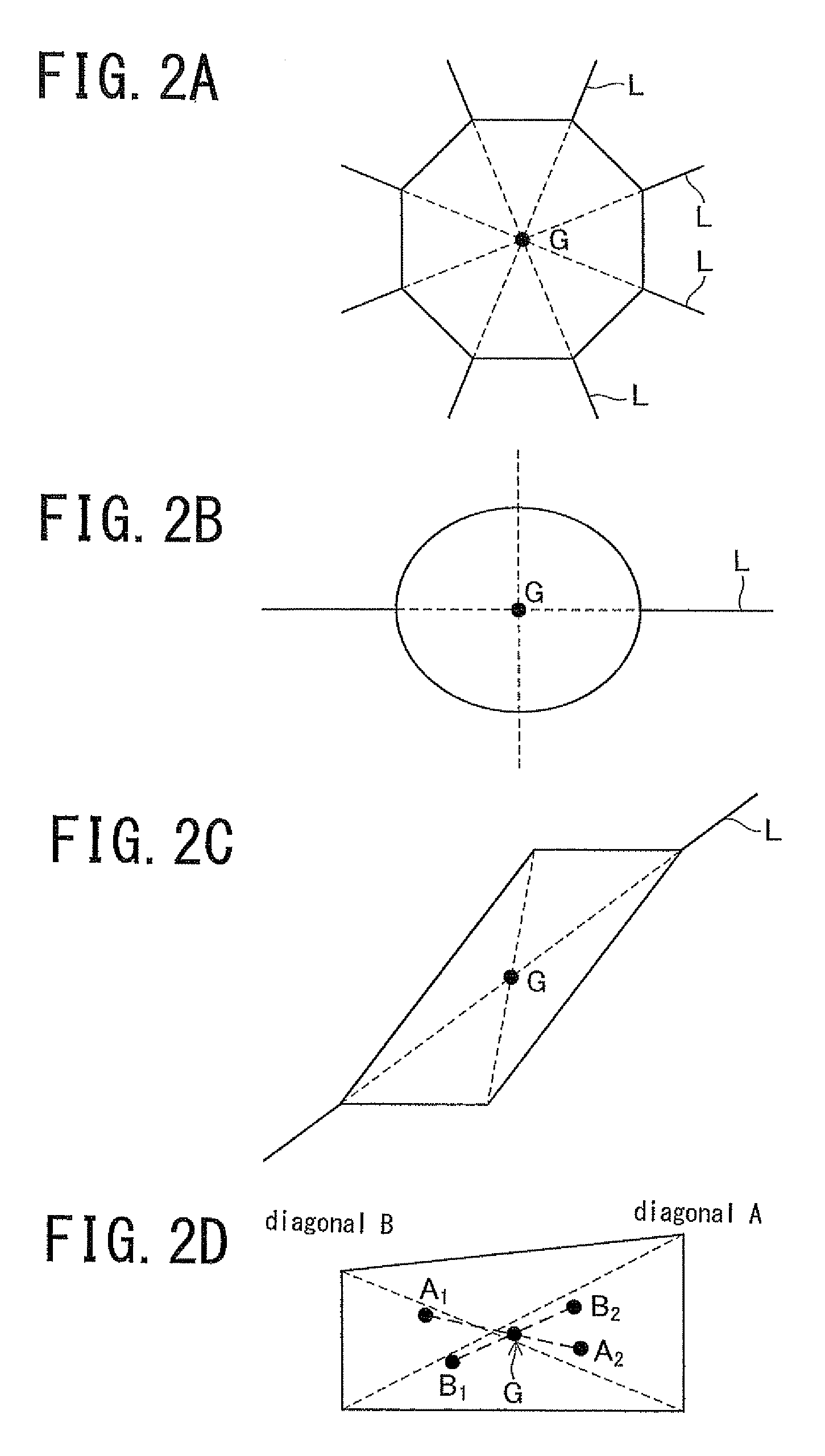Imprint method, and imprint apparatus for implementing the same
a technology of imprinting and printing method, which is applied in the direction of photomechanical equipment, instruments, nanoinformatics, etc., can solve the problems of inconvenient deposition of resin, risk of mold breakdown, and heavy deposition and breakdown risk, and achieve the effect of less peeling for
- Summary
- Abstract
- Description
- Claims
- Application Information
AI Technical Summary
Benefits of technology
Problems solved by technology
Method used
Image
Examples
example 1
[0123]A region of contact (resin layer 5′) similar to such morphologies as depicted in FIGS. 3A and 38 was prepared. Unlike FIG. 3A, however, the region of contact is of morphology capable of approximating to a rectangle. Suppose now that the teardrop in FIG. 3A takes on a rectangular morphology.
[0124]Quartz glass having a surface size of 40×40 mm and a thickness of 6.35 mm was used to prepare a mold. A pattern depth of 50 nm and a line width / space of 50 nm / 50 nm were repeated 100 times into a length of 2 mm. Four such patterns were provided, one at the center of the mold, and three 5 mm away from the center in the XY direction. In short, the concavo-convex structure region A1 may be taken as a rectangle of 10.02 mm×14 mm at the center of the mold surface.
[0125]The mold surface was coated with a releasing agent Optool DSX (Daikin Industries, Ltd.).
[0126]A silicon substrate of 0.625 mm in thickness was provided as an imprinting substrate.
[0127]A photo-curing resin material having the...
PUM
| Property | Measurement | Unit |
|---|---|---|
| internal angle | aaaaa | aaaaa |
| internal angle | aaaaa | aaaaa |
| thickness | aaaaa | aaaaa |
Abstract
Description
Claims
Application Information
 Login to View More
Login to View More - R&D Engineer
- R&D Manager
- IP Professional
- Industry Leading Data Capabilities
- Powerful AI technology
- Patent DNA Extraction
Browse by: Latest US Patents, China's latest patents, Technical Efficacy Thesaurus, Application Domain, Technology Topic, Popular Technical Reports.
© 2024 PatSnap. All rights reserved.Legal|Privacy policy|Modern Slavery Act Transparency Statement|Sitemap|About US| Contact US: help@patsnap.com










